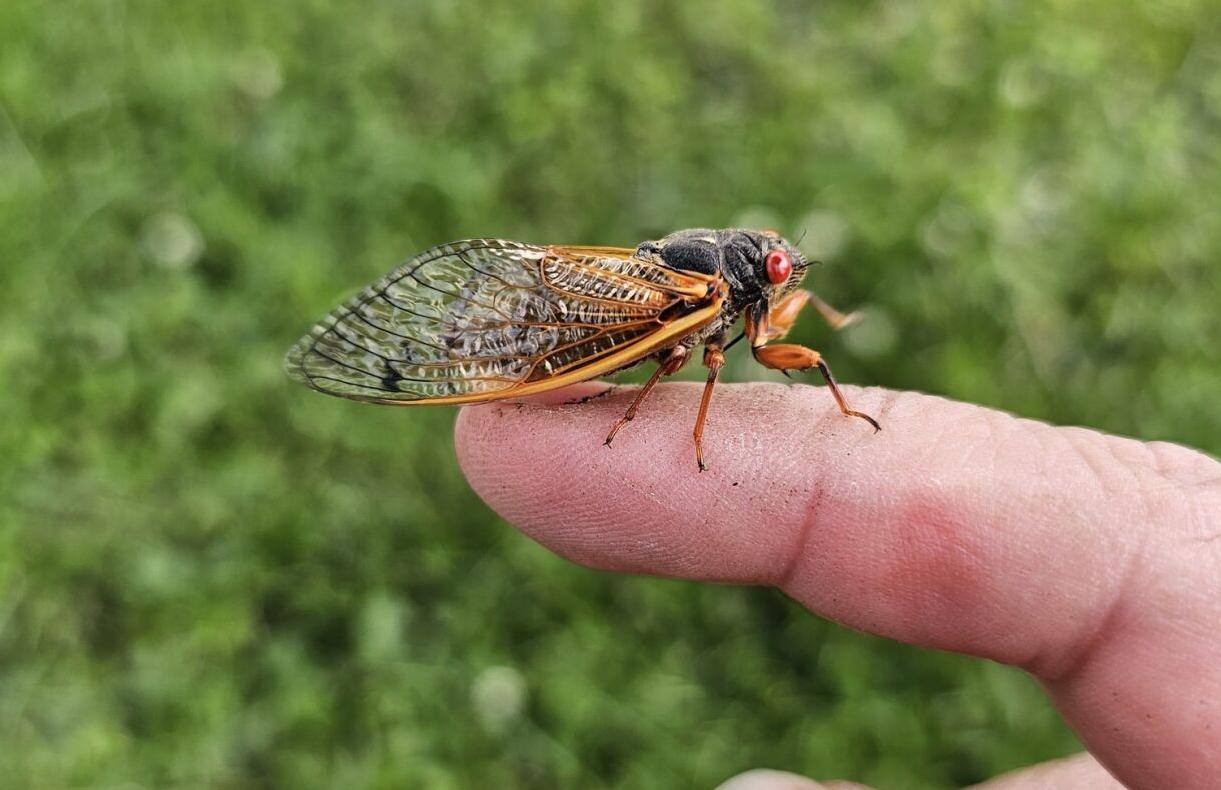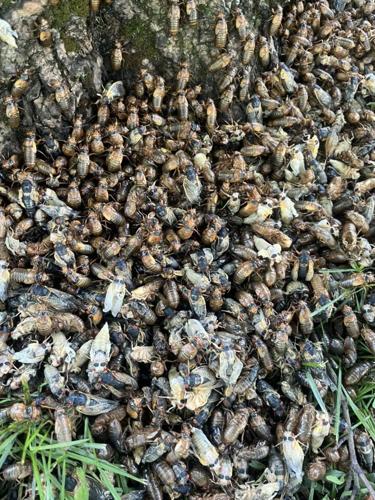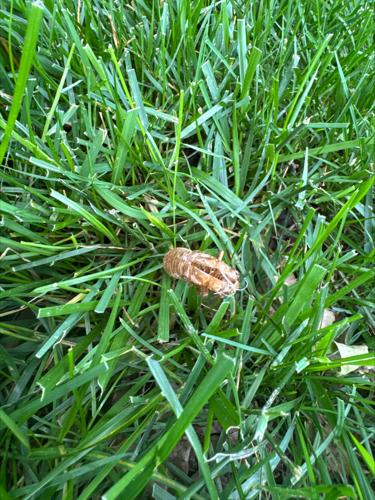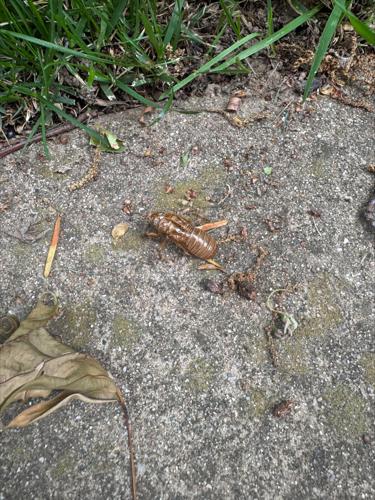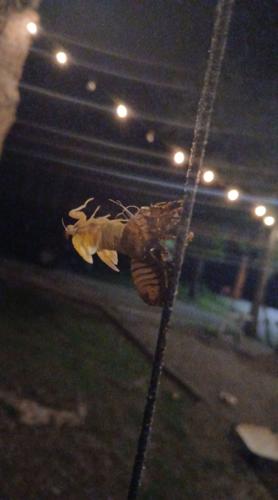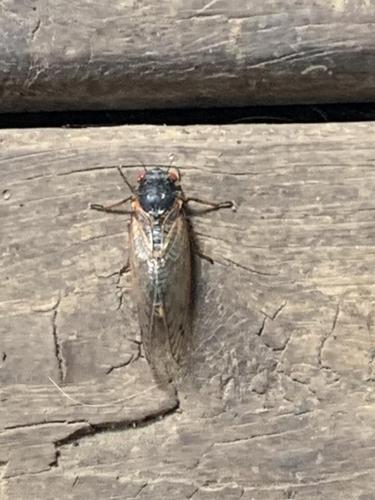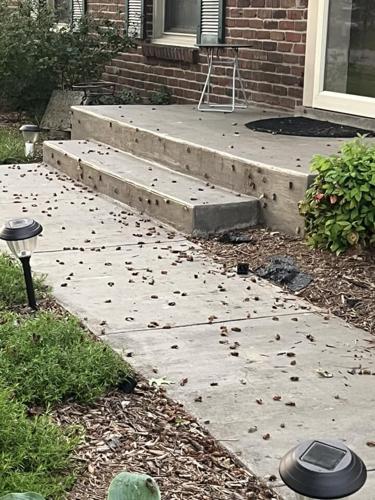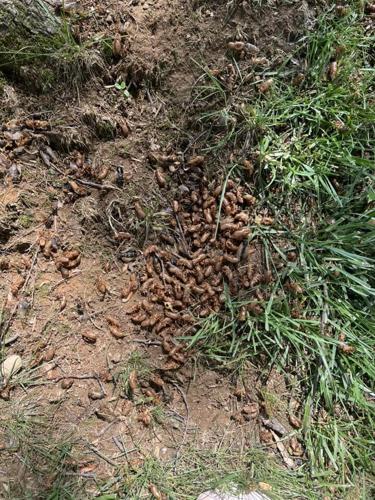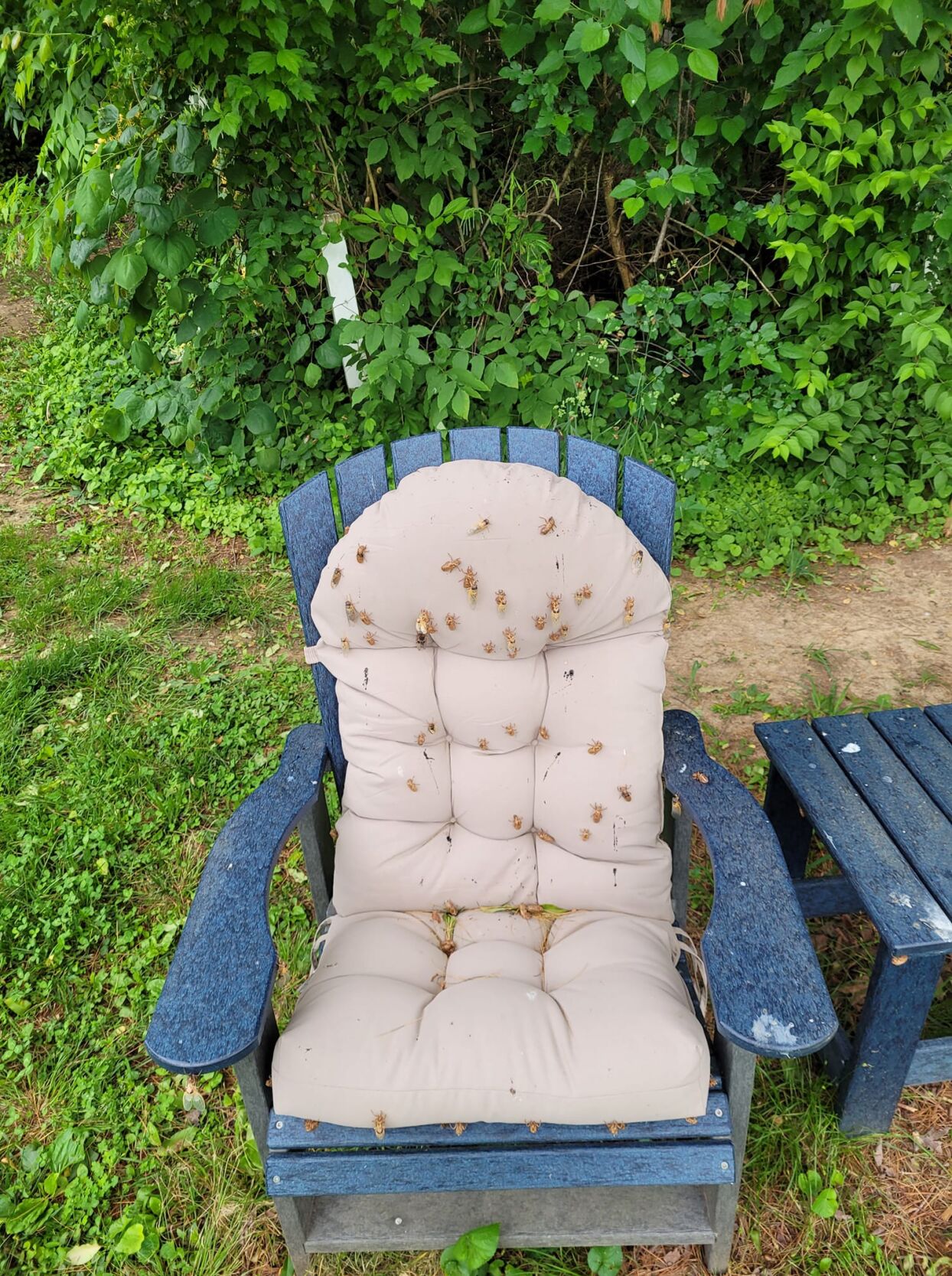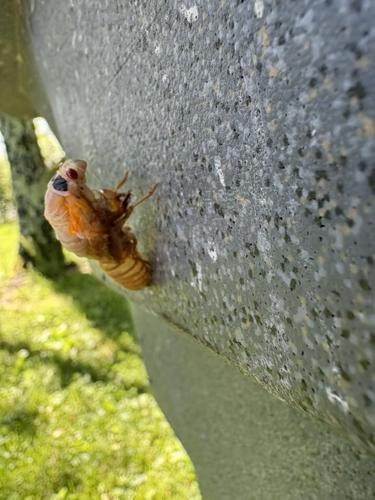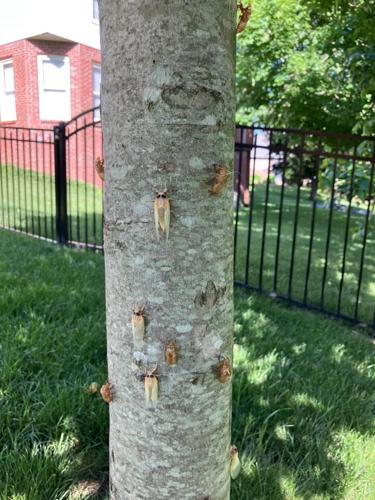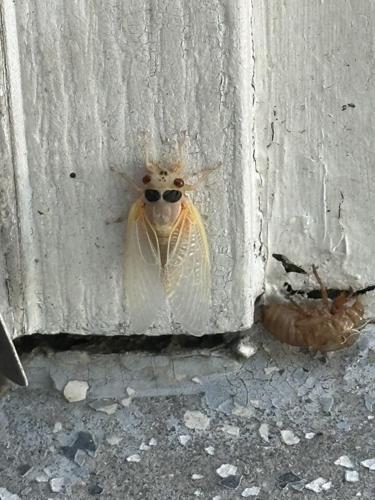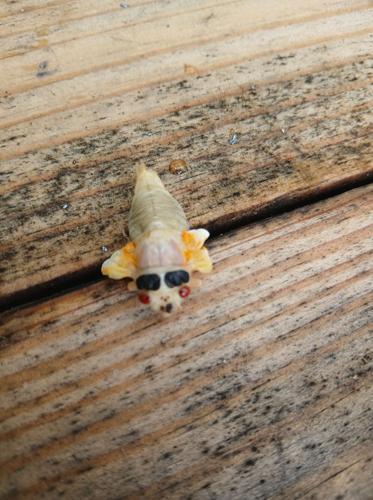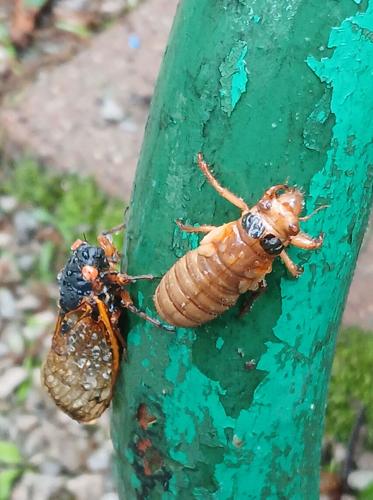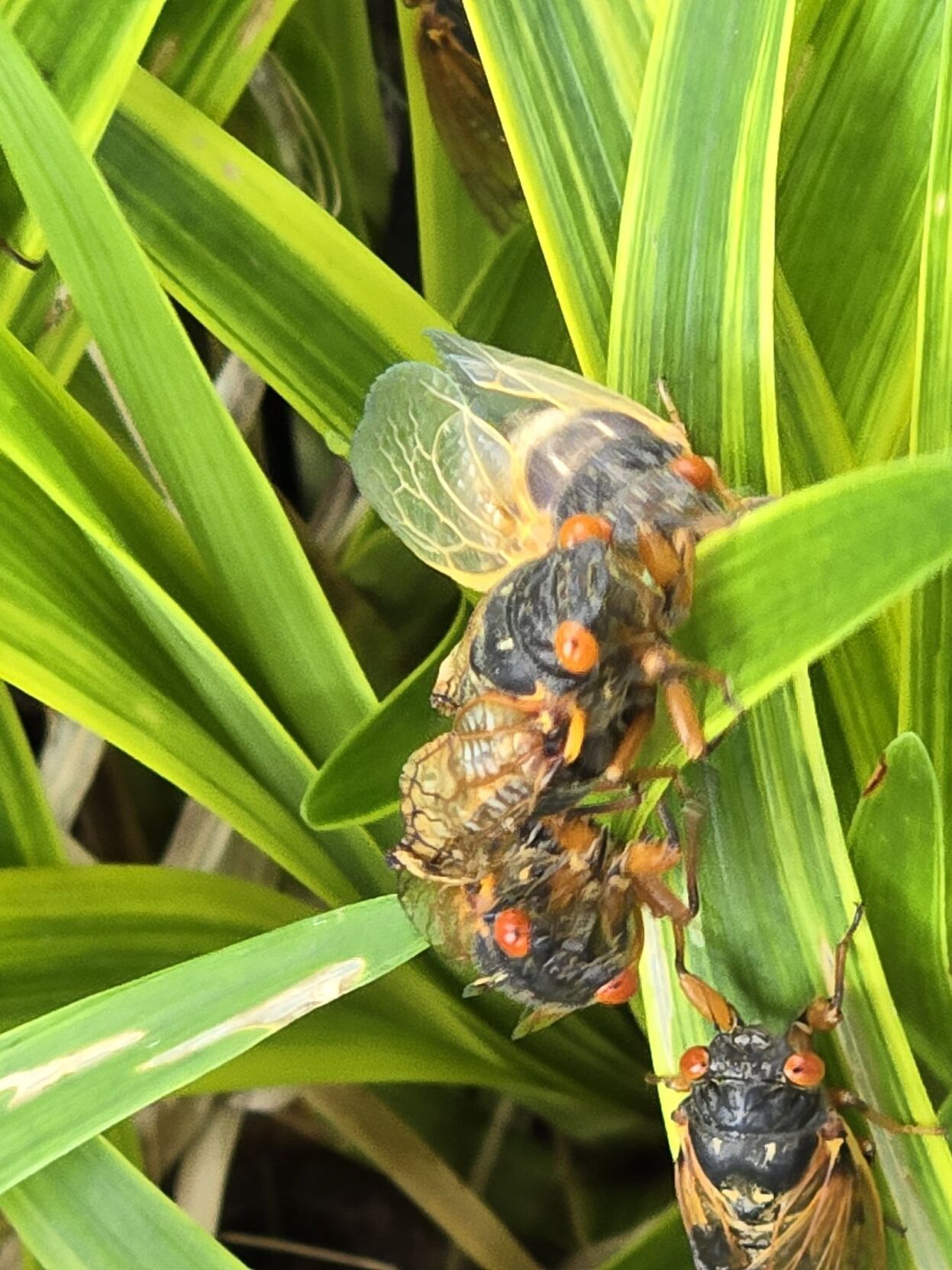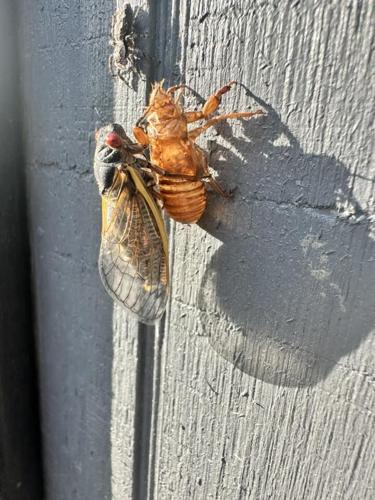LOUISVILLE, Ky. (WDRB) -- After nearly two decades underground, a noisy, natural phenomenon is buzzing back to life across Kentucky and southern Indiana.
Brood XIV, one of the largest broods of 17-year periodical cicadas, is emerging from the soil in massive numbers with their signature buzzing chorus. The insects will blanket trees, fences and sidewalks throughout Kentucky and parts of Indiana.
The emergence — last seen in 2008 — includes several species of cicadas that have spent the last 17 years developing underground as nymphs, feeding on sap from tree roots. Now, as ground temperatures rise above 64 degrees, they're surfacing to molt, mate and restart the cycle for another generation.
"It's romantic. It's love," said Jonathan Larson, an entomologist at the University of Kentucky. "They are trying to find one another and mate. That's what you're hearing when the cicadas are singing."
Despite their dark color and terrifying red eyes, they are harmless, experts say.
Brood XIV cicadas are expected to be most concentrated in central and eastern Kentucky as well as southern Indiana. The emergence is also being reported in parts of Tennessee, Ohio and Georgia.
The insects live for only a few weeks above ground. Males "sing" to attract females, who then lay eggs in tree branches. Once the eggs hatch, the young cicadas fall to the ground and burrow into the soil, where they'll remain for the next 17 years.
As for the adults, this marks the end of life.
"They will die above ground," Larson said. "They will decompose and return a lot of nutrients to the soil. Other things may scoop them up and eat them"
There are a dozen 17-year broods and three 13-year broods of cicadas.
"They don't want to put all their eggs, literally, in one basket," Larson said. "So we have these different groupings of them spread out across the eastern United States, so they'll emerge in different years to cut down on competition."
Officials advise delaying any new tree plantings until the emergence ends in late June, as female cicadas can damage young branches while laying eggs. Mature trees, however, typically recover without issue.
IMAGES | Cicadas begin summer 2025 takeover in Kentucky
Top Stories:
'It was too late' | Kentucky father fights back tears recounting how family survived EF3 tornado
New downtown park breaks ground near Louisville’s medical district
VIDEO | Cat pulled from rubble after deadly tornado in eastern Kentucky
Copyright 2025 WDRB Media. All Rights Reserved.
